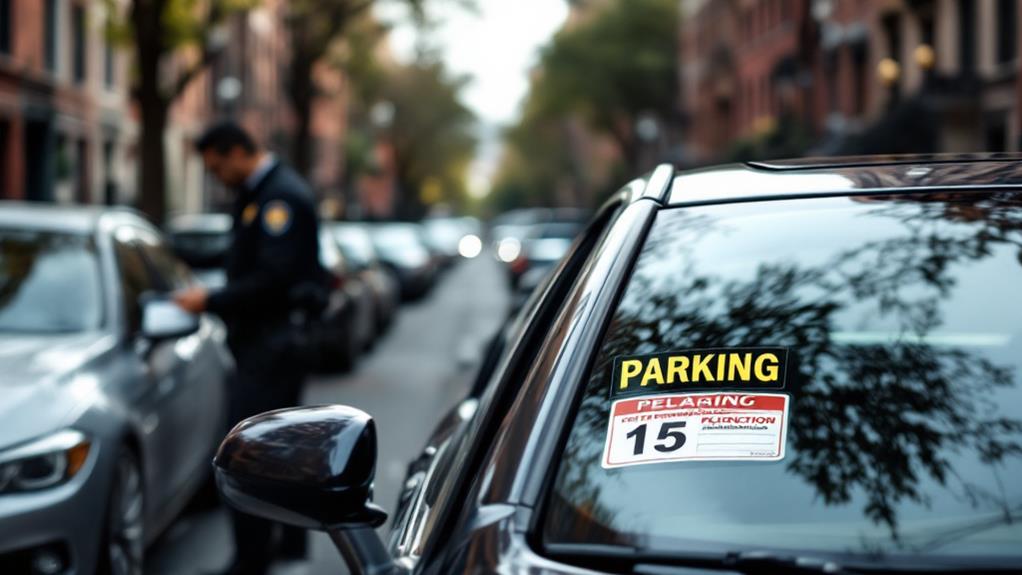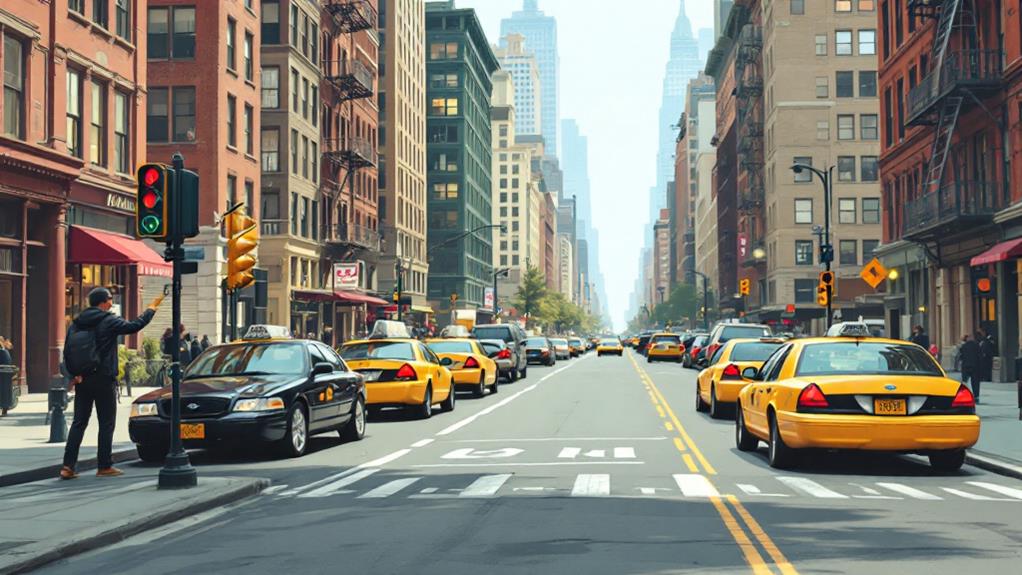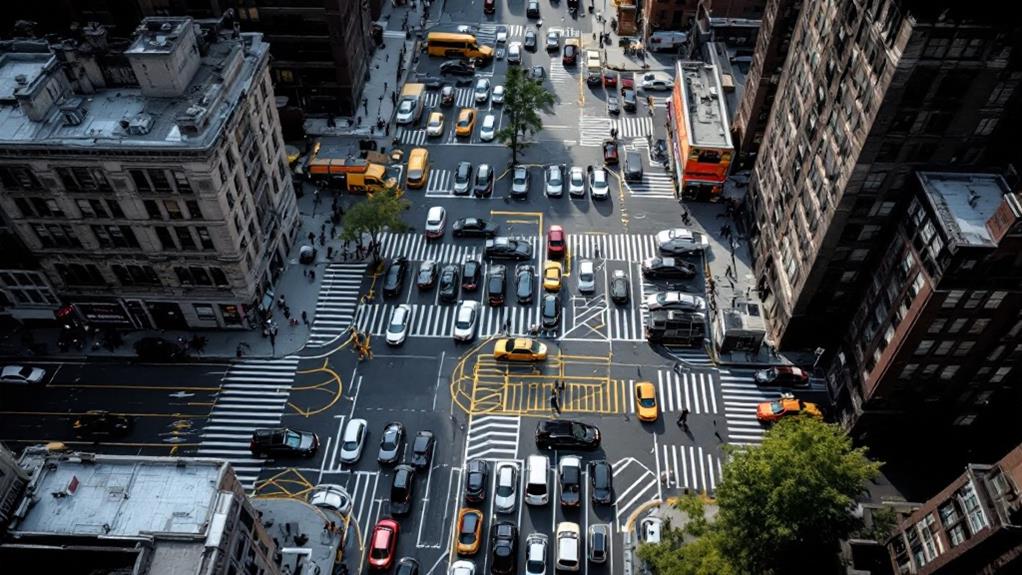How New York City's Alternate Side Parking Rules Affect Drivers
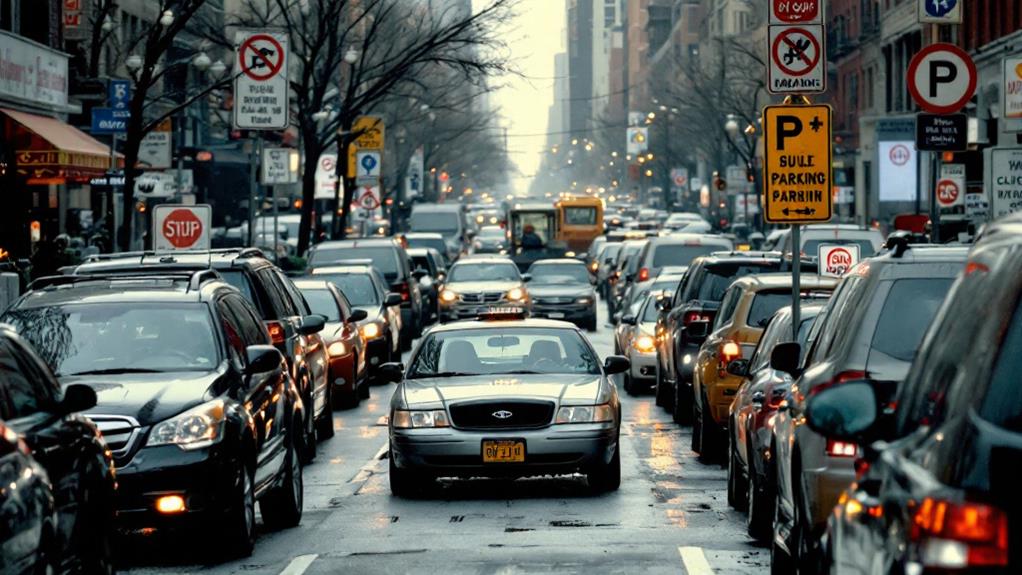
New York City's Alternate Side Parking (ASP) rules dramatically impact your daily life as a driver. You'll need to move your car 1-2 times weekly to avoid fines up to $65 and potential towing. These regulations strain your time management, forcing you to juggle schedules and adopt strategies like sitting in your car during cleaning hours. While ASP helps maintain cleaner streets, it's a financial burden, especially for low-income residents. You can use parking apps, consider garage options, or seek handicap permits to ease the hassle. The system's effectiveness and fairness remain topics of citywide debate, balancing cleanliness with urban priorities and environmental concerns.
Understanding Alternate Side Parking
Traversing the complexities of Alternate Side Parking (ASP) in New York City can be a formidable task for drivers. You'll need to move your vehicle once or twice weekly to accommodate street cleaning by the Department of Sanitation. This system, designed to keep the city's streets clean, requires your vigilance and planning.
To comply with ASP rules, you must pay close attention to street signs that clearly display the parking schedules and times. The Department of Transportation offers an interactive map to help you maneuver these regulations. Remember, failing to adhere to ASP rules can result in steep fines of up to $65 per violation and the risk of having your car towed.
While ASP rules are suspended on Sundays and major holidays, don't let your guard down completely. Other parking rules may still apply, so you'll need to stay alert. If you're looking to avoid the ASP hassle altogether, consider using parking garages. However, be prepared for potentially high costs. Your best bet is to research and plan ahead to secure those coveted parking spots without breaking the bank or the law.
Financial Impact on Drivers
The financial toll of Alternate Side Parking in New York City can be staggering for drivers. You'll face hefty fines of up to $65 in Manhattan and $45 in other boroughs if you violate these street cleaning rules. As a New Yorker, you're likely familiar with the stress of parking in NYC, but the financial impact of these parking regulations can be particularly burdensome.
Getting fined for ASP violations isn't just a one-time hit to your wallet. Accumulating multiple tickets can quickly escalate your costs, potentially leading to vehicle towing and compounding fines. This can be especially challenging if you're a low-income resident struggling to afford these penalties or find alternative parking options.
The financial strain of ASP rules has led many drivers to adopt time-consuming strategies, like sitting in their cars during street cleaning hours to avoid getting fined. This highlights the extent to which these parking regulations affect your daily life and finances. Many view these fines as an excessive revenue-generating tactic by the city, adding to the frustration of maneuvering New York's already complex parking milieu.
Street Cleanliness and Litter Control
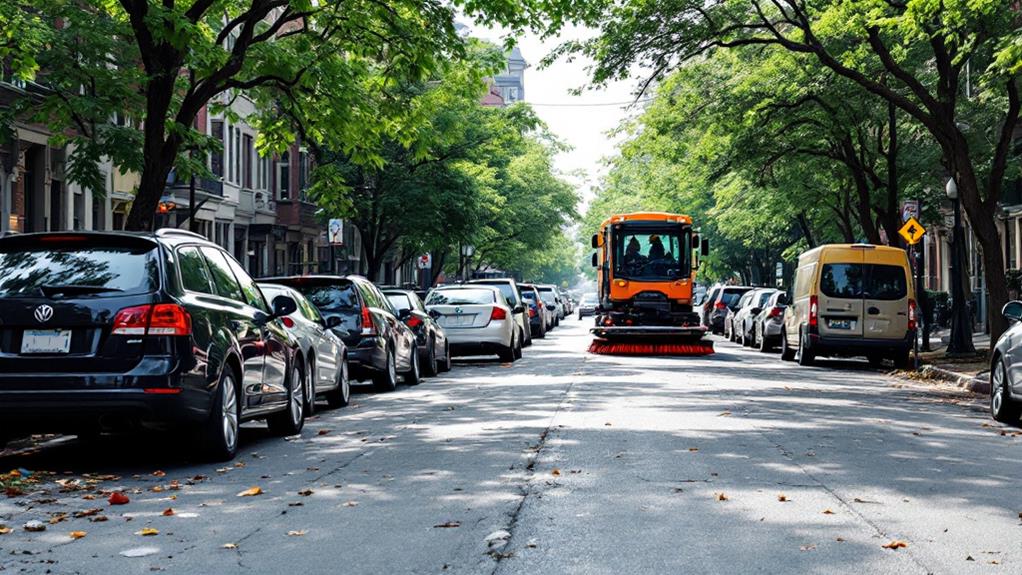
Despite the inconvenience to drivers, Alternate Side Parking regulations play an essential role in keeping New York City's streets clean. These parking rules allow the Department of Sanitation to conduct regular street cleaning, which helps control litter and maintain the overall cleanliness of the city's thoroughfares.
You'll notice that when these regulations are enforced, there's a significant reduction in debris and litter on the streets of New York. During the pandemic, when alternate side parking rules were suspended, the city experienced a noticeable increase in street litter, highlighting the importance of these parking regulations.
While some experts suggest reducing street cleaning frequency to once a week, advocates argue that the current system is pivotal for maintaining clean streets. As you traverse the city, you'll see how these rules contribute to a cleaner urban environment.
However, the debate around alternate side parking extends beyond just cleanliness. There are ongoing discussions about environmental justice and alternative uses for curb space. As a driver, you're part of a larger conversation about balancing street cleanliness with other urban priorities in New York City.
Time Management Challenges
For New York City drivers, alternate side parking rules present significant time management obstacles. You'll find yourself juggling your schedule multiple times a week to move your car for street cleaning. This ritual often means sitting in your vehicle during cleaning hours to avoid the $65 fine for violations, eating into your productive time.
The pandemic's impact on parking enforcement and availability has further complicated matters. With the surge in new car registrations, you're now facing increased competition for alternative spots when required to relocate. This heightened difficulty in finding parking adds another layer to your time management challenges.
While the pause in enforcement during the pandemic led to increased street litter, prompting calls to reconsider cleaning frequency, it also highlighted the inefficient use of public space. You're left to traverse a system that's deeply ingrained in New York City's driving culture, yet often criticized for its inefficiency.
As you balance your daily responsibilities with these parking rules, you're constantly aware of the time constraints imposed by alternate side parking. It's a unique aspect of city life that demands careful planning and adaptability from drivers.
Parking Strategies and Alternatives
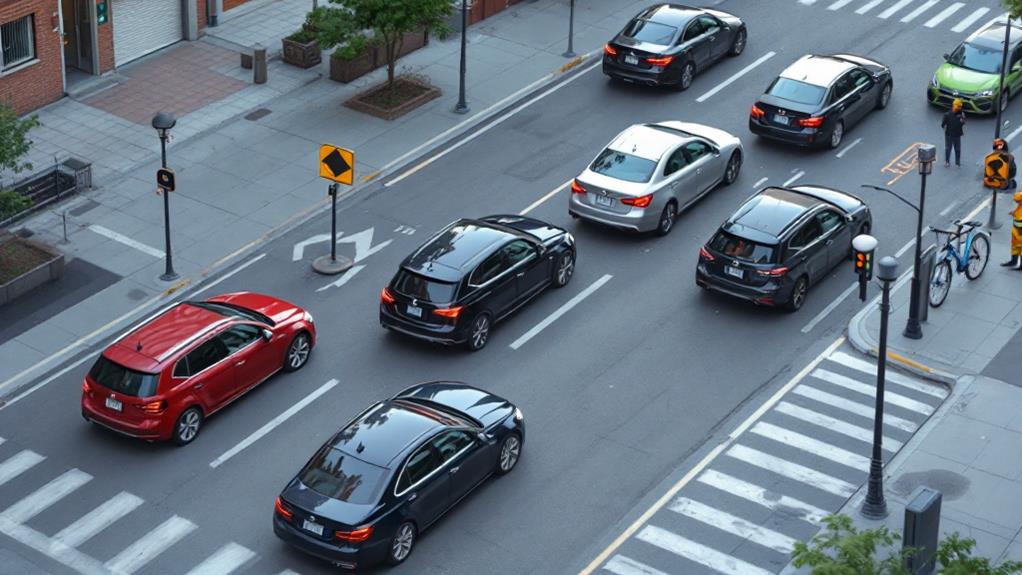
Given the time-consuming nature of alternate side parking, you'll want to investigate various strategies and alternatives to simplify your parking situation in New York City. Start by thoroughly understanding street parking signs in your neighborhood, as regulations can vary substantially across the boroughs. Use the NYC311 Mobile app to check if alternate side parking is in effect and receive notifications about changes.
If you're frequently struggling to find street parking, consider exploring monthly parking options in nearby garages. While potentially expensive, with rates ranging from $20-$50 daily, booking in advance through apps can offer cost savings. Alternatively, look for parking on the outskirts of busy areas like Midtown, which may be cheaper than city center spots.
For those with mobility challenges, handicap parking permits provide free parking in designated spots and metered spaces. Remember that vehicles can generally be parked on NYC streets for up to 7 days, but you'll need to move their cars according to alternate side parking rules. When relocating to a new neighborhood, research local parking regulations thoroughly to avoid unexpected tickets or towing.
Citywide Effects and Controversies
Alternate side parking in New York City remains a contentious issue, sparking debates about its effectiveness and fairness. You'll find that the city's complex parking rules can lead to hefty fines of up to $65 if you're not careful. These regulations, designed to address 20th-century car congestion, have been in place for decades but continue to face challenges.
During the COVID-19 pandemic, the suspension of alternate side parking revealed its importance in maintaining street cleanliness. Without regular cleaning, litter increased, highlighting the program's role in keeping the city tidy. However, you might question whether the current frequency of street cleaning is necessary.
As a driver, you're likely aware of the ongoing debates surrounding these rules. Some argue for reducing cleaning times, while others advocate for repurposing curb space. Environmental justice concerns have also entered the conversation. Critics suggest that the vast amount of public space dedicated to subsidized street parking could be better used for bike lanes, bus lanes, and green spaces. The Department of Transportation faces the challenge of balancing these competing interests while maintaining the city's cleanliness and addressing parking needs.

